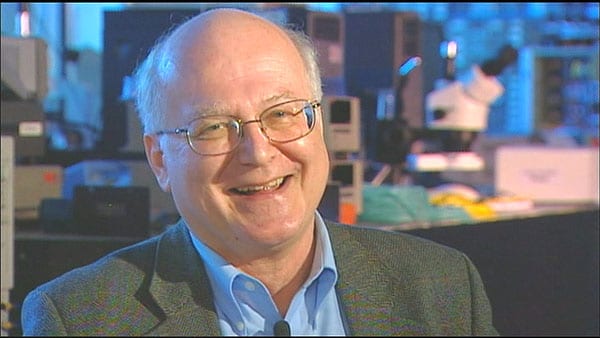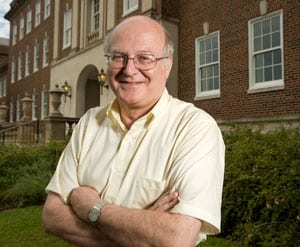WFAA-TV reporter David Schechter covered SMU’s participation in the largest physics experiment in the world, the Large Hadron Collider at the European Organization for Nuclear Research — or CERN — in Geneva.
SMU physicist and physics professor Ryszard Stroynowski is U.S. Coordinator for the Liquid Argon Calorimeter, the literal and experimental heart of ATLAS, the largest particle detector in the LHC array.
The Channel 8 story explored the connection between the LHC and the Superconducting Super Collider, a particle detector that was under construction in North Texas until 1993, when its funding disappeared as Congress attempted to balance the budget. WFAA’s story, “Super Collider’s legacy lives on in Switzerland,” aired March 22.
Stroynowski leads an SMU delegation that includes Fredrick Olness, professor of physics, Robert Kehoe and Jingbo Ye, associate professors of physics, and Stephen Sekula, assistant professor of physics, all in Dedman College.
The SMU team is focusing on three projects in parallel:
- improvements of the graphic and software interfaces for control and monitoring of the detector and of the quality of its data
- preparation of the software packages to analyze the data
- design and prototyping of the modifications of the readout electronics that will be needed for future upgrades of the experiment to much higher-intensity beams — a six-year research and development project led by Jingbo Ye in SMU’s Physics Electronics Lab.
The LHC is considered the world’s largest physics experiment. The particle accelerator is a 27-kilometer circular tunnel that lies 100 meters underground near Geneva on the French-Swiss border. It uses a magnetic field to propel high-energy protons into each other.
The LHC’s proton collisions release even smaller pieces of matter, and the Atlas particle detector helps measure the tracks they leave. The huge, international project is directed at finding the “Higgs boson,” a subatomic “God particle” that physicists believe could help explain the origin of our Universe.
The theory behind the Higgs boson holds that all particles had no mass just after the “Big Bang.” As the Universe cooled and the temperature fell below a critical value, an invisible force field composed of subatomic particles called the “Higgs boson” developed throughout the cosmos. Particles that interact with the field gain mass and particles that never interact have no mass. But the theory remains unproven because no one has ever seen the Higgs boson at work
EXCERPT:
By David Schechter
WFAA-TV Channel 8
Did Congress kill the golden goose?The massive Superconducting Super Collider project was supposed to be built in a 54-mile circular underground cavern near Waxahachie, but it fell victim to federal budget cuts almost two decades ago.
Some people argue that had it survived, the Super Collider would have spawned new ideas, industry, investment — and jobs in North Texas.
But the Super Bowl of science projects has moved on without us, taking its economic benefits with it.
The Large Hadron Collider near Geneva, Switzerland makes so many big claims it would, no doubt, fit right in here in Texas.
It is the largest machine in the world — over 16 miles long.
It operates the most powerful computer in the world.
And the LHC is on the verge of making one of mankind’s most important scientific discoveries.
SMU physics professor Dr. Ryszard Stroynowski, who shuttles between Dallas and Geneva, is a key player in the search for a single particle that — if discovered — could fundamentally explain how our universe works.
“I haven’t been in such a state of anticipation ever since I was a student, some 40-some years ago,” he said.
But it’s been a long road. Stroynowski came to SMU in 1991, when the Superconducting Super Collider was under construction in Ellis County. The project was designed for similar research until it was killed by Congress in 1993 to help balance the budget.
SMU has an uplink facility on campus for live TV, radio or online interviews. To speak with Dr. Stroynowski or to book him in the SMU studio, call SMU News & Communications at 214-768-7650 or UT Dallas Office of Media Relations at 972-883-4321.
 WFAA-TV reporter David Schechter covered SMU’s participation in the largest physics experiment in the world, the
WFAA-TV reporter David Schechter covered SMU’s participation in the largest physics experiment in the world, the 



